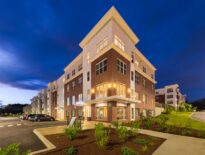While across the country the number of renters is outpacing the number of homeowners, Greater Boston is headed in a different direction.
Nationwide, the number of renter households rose 2.7 percent year-over-year in the third quarter, a new analysis of U.S. Census data by Redfin economists found, while the number of homeowner households increased 0.9 percent.
“Affordable housing has been at the forefront of this election cycle because so many people are struggling to see how they will ever become homeowners – especially those from younger generations, ” Redfin Senior Economist Sheharyar Bokhari said in a statement. “With home prices at record highs and mortgage rates remaining elevated, renting is increasingly the only viable choice for many young people and families. Building more homes will help address that, but we also have to recognize that Gen Z and future generations may not view homeownership as a life goal and the rentership rate may continue to rise for years to come.”
Meanwhile, the homeownership rate in Greater Boston increased from 58.5 percent in the third quarter of 2023 to 60 percent in the third quarter of 2024. The number of renters dropped from 41.5 percent to 40 percent in the same time period.
The reduction in the share of renters is also taking place elsewhere in New England, despite the lack of for-sale inventory and high mortgage rates that have kept many from being able to afford homeownership.
In Fairfield County, part of the New York City metro area Connecticut’s priciest housing market, the number of renters dropped from 34 percent in the third quarter of 2023 to 33.3 percent in the third quarter of 2024.
In Greater Hartford, Connecticut, the share of renters dropped from 33.1 percent to 32.5 percent over the same period, while the share of homeowners rose from 66.9 percent to 67.5 percent.
One thing that could be helping that national increase in renter households, Redfin researchers said: a record number of new multifamily homes coming online this year – a trend that’s far more muted in New England metro areas. As of the third quarter, the nation is on pace to add 647,000 new homes this year, concentrated in Sun Belt states, a rate that’s roughly double how many multifamily homes came online each year in the decade before the Great Financial Crisis of 2008.







